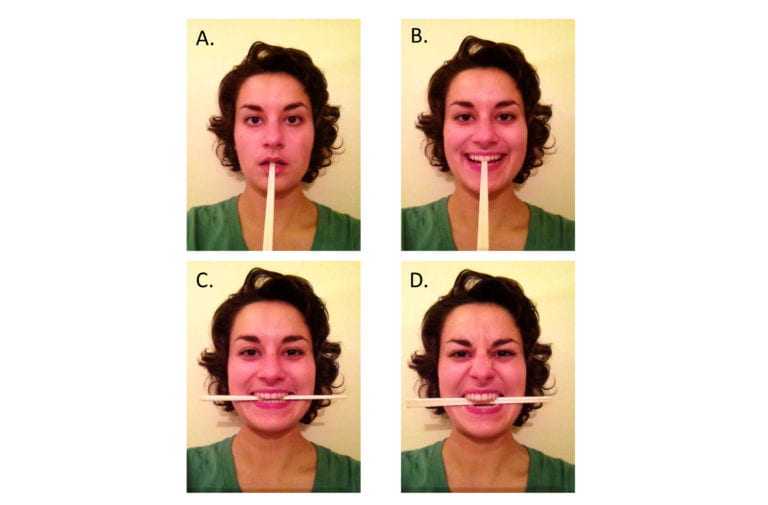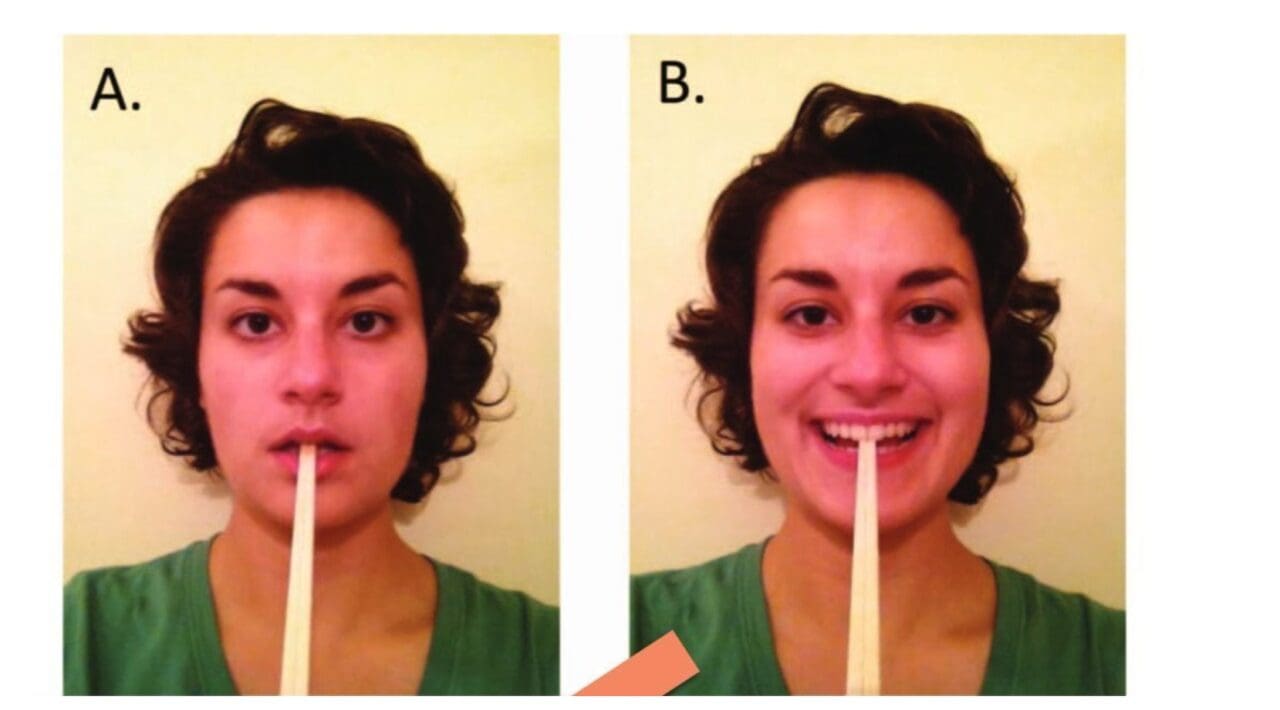Does smiling make injections less painful?
Injections are never fun to have and can sometimes be downright painful. But could it be the case that our facial expression determines how painful we find it? The idea that there is a relationship between facial expressions and emotions is controversial.

An experiment was carried out to test this, participants were made to smile or grimace without realising what they were doing. Sounds strange but participants were asked to hold a chopstick between their teeth in various ways to produce a smile or grimace. The participants were told they were in a study on multi-tasking and its effects on how injections are experienced, therefore their expectations should not influence the results. The chopstick was seen as a part of that study. Finally, participants received a saline injection in their arm. Objective measures of stress (heart rate and skin conductance) and subjective measures of pain and stress were measured.
Those with big smiles (a Duchenne smile involving the muscles at the sides of the eyes) and grimaces coped best: they gave lowest heart rates and self-reported stress levels. Although reasons aren’t clear, smiling is associated with positive emotions, which reduced feelings of pain, as well as the intense muscle activation caused by grimacing having a physiological effect. The result regarding grimacing is interesting as it’s an instinctive response to pain, which raises the question of whether we might naturally do this to reduce painful feelings!









